Abstract
Clinical and bacteriological efficacy, patient tolerance, and toxicity of cefoxitin, a beta-lactamase-resistant cephamycin, were evaluated in 38 patients; 13 had soft tissue infection, 12 had pneumonia, 3 had urinary tract infection, 2 had peritonitis, and 4 had miscellaneous infections. In five patients, infection was clinically evident, though not bacteriologically proven. The latter patients were evaluated with regard to tolerance and toxicity only. Among the 34 infections in 33 patients, 71% were considered clinically cured; 86% of those patients who could be recultured were bacteriologically cured. Phlebitis was noted in 32% of the total group, and eosinophilia was observed in 16%. Unexplained deterioration in renal function occurred in two patients. Mean peak cefoxitin levels in serum were 72 μg/ml 30 min after a 2-g infusion and 32 μg/ml 30 min after a 1-g infusion. Cefoxitin was more active against facultatively and obligately anaerobic gram-negative organisms isolated from these patients than was cephalothin.
Full text
PDF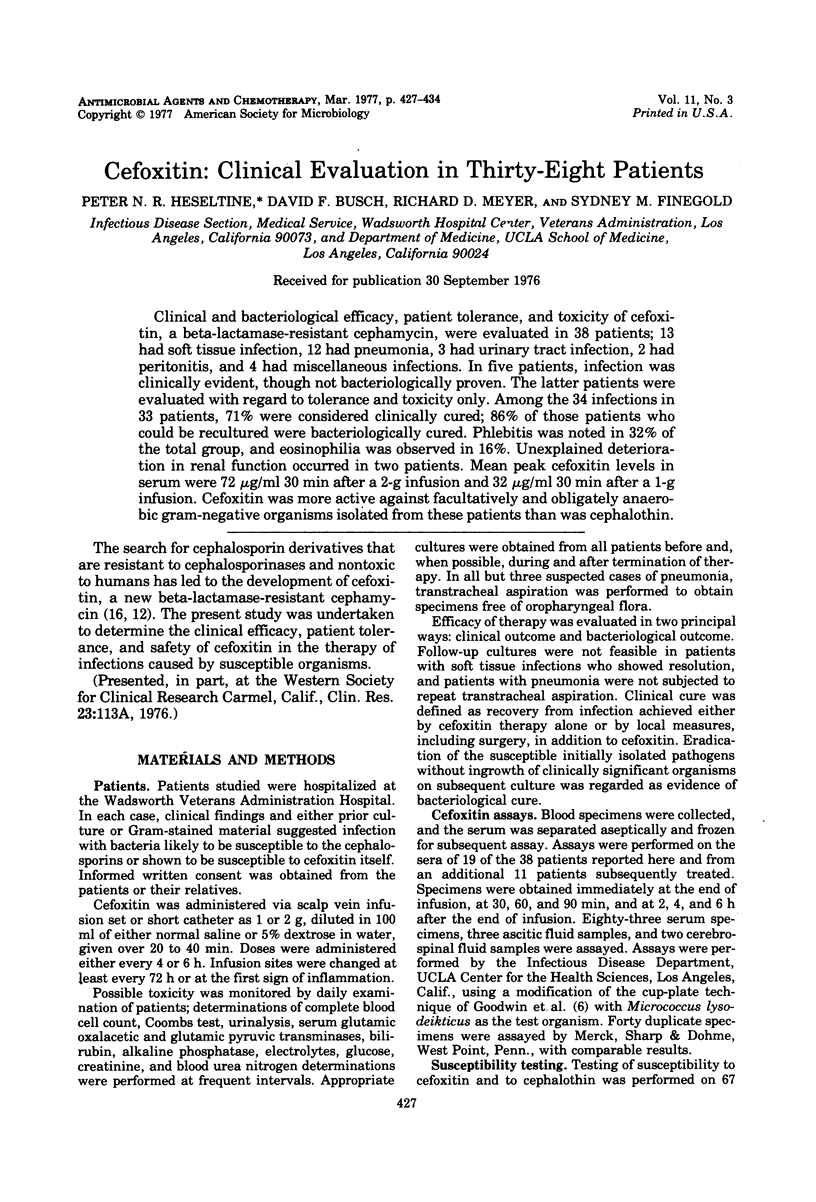
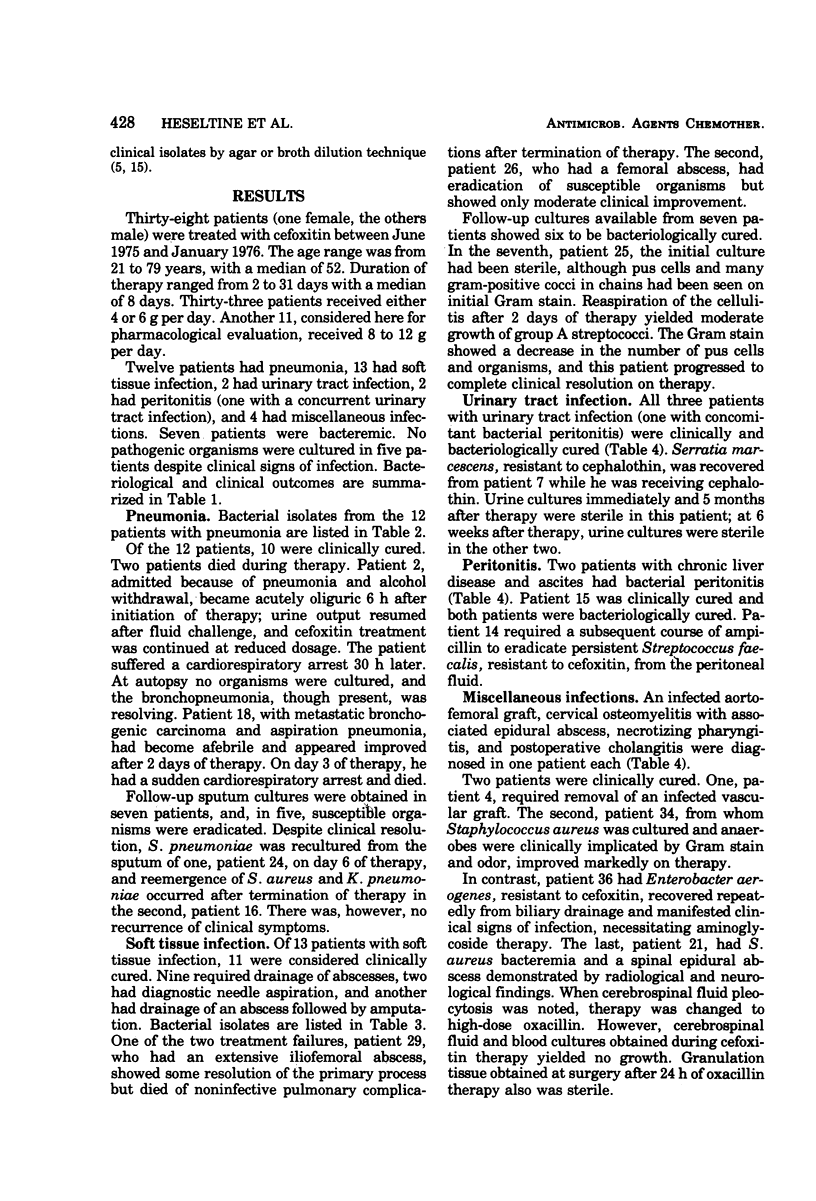
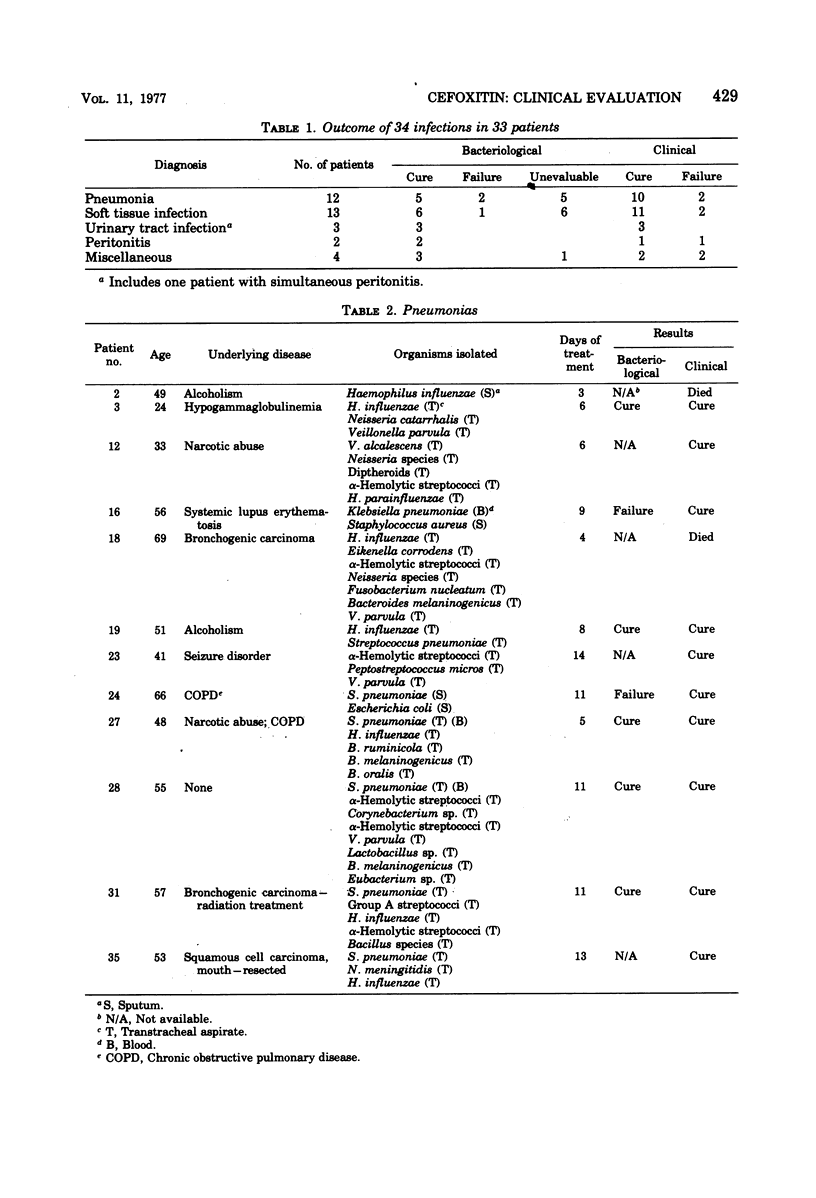
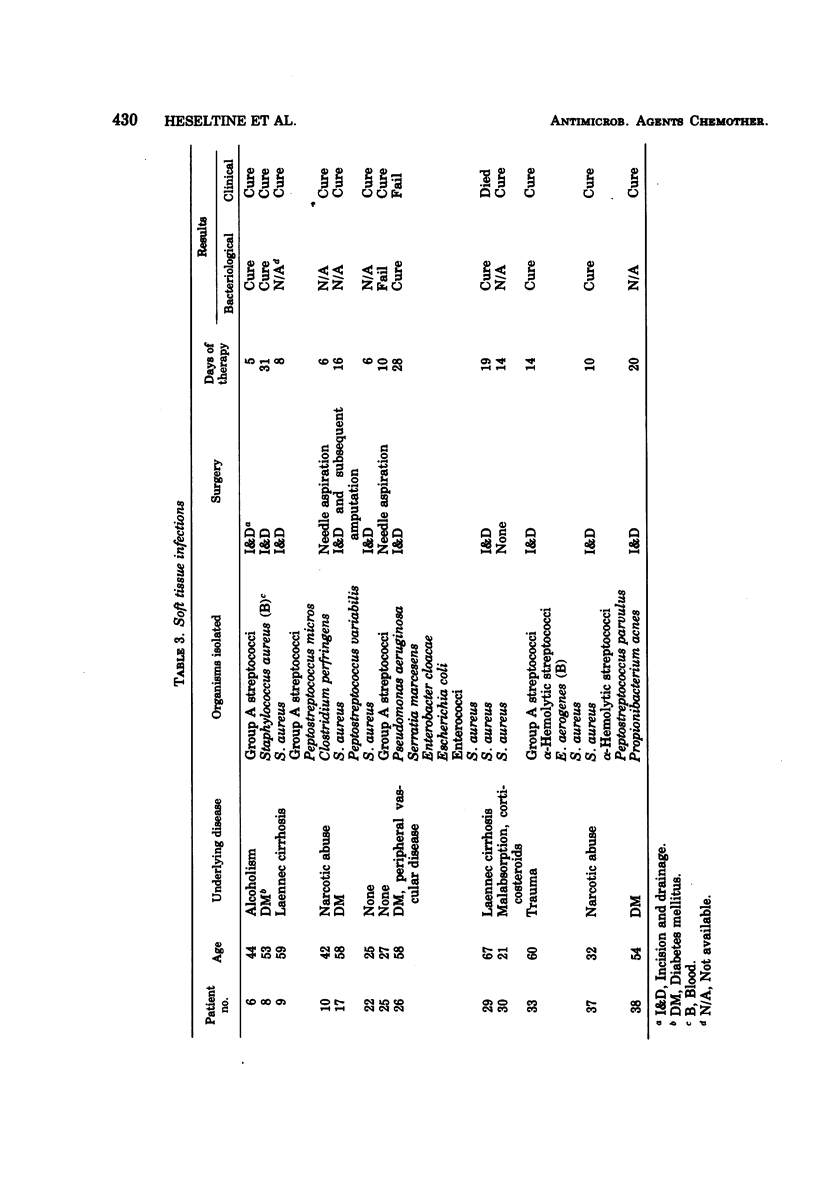
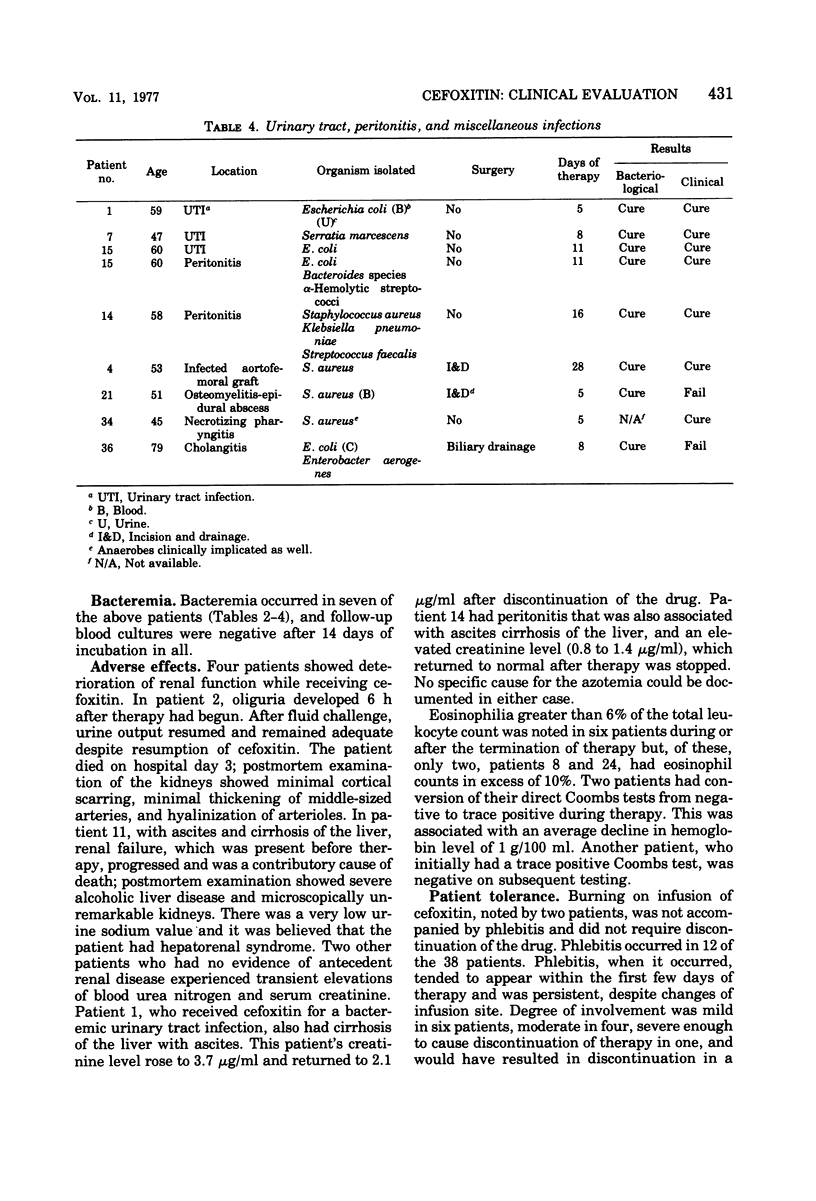
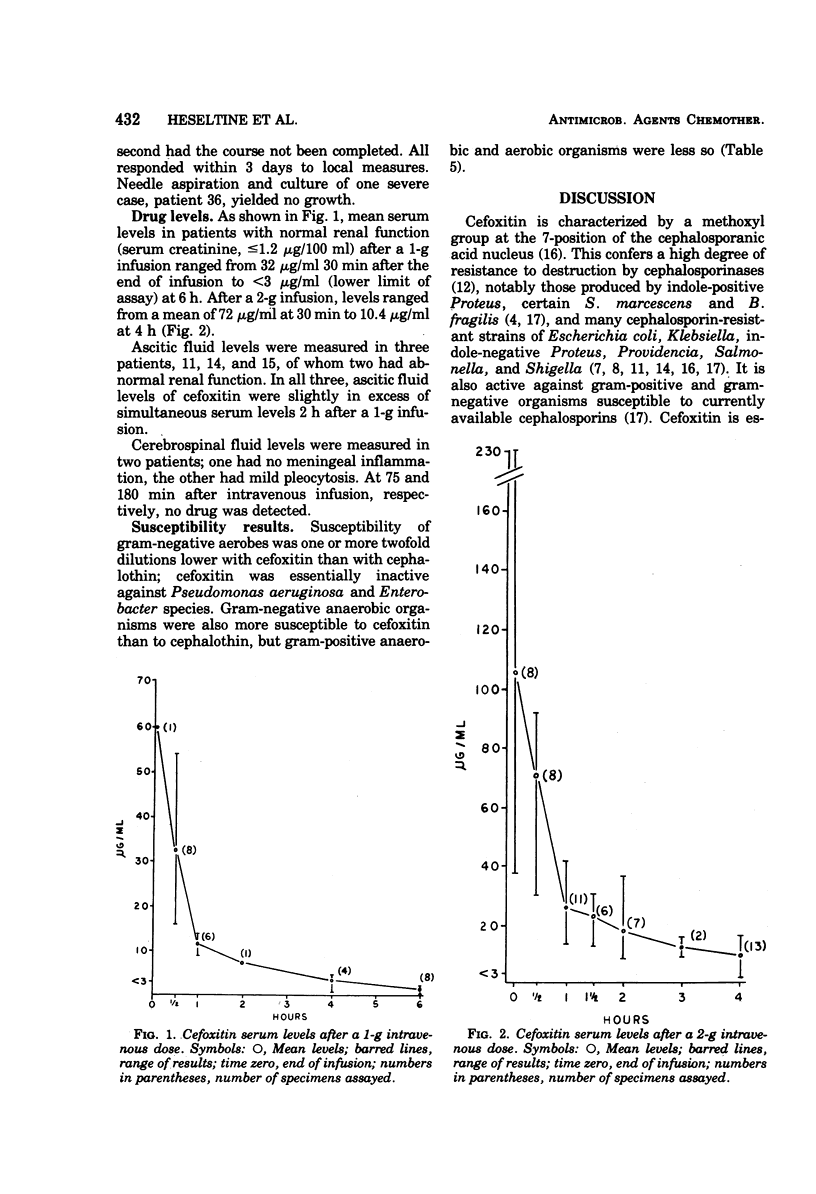
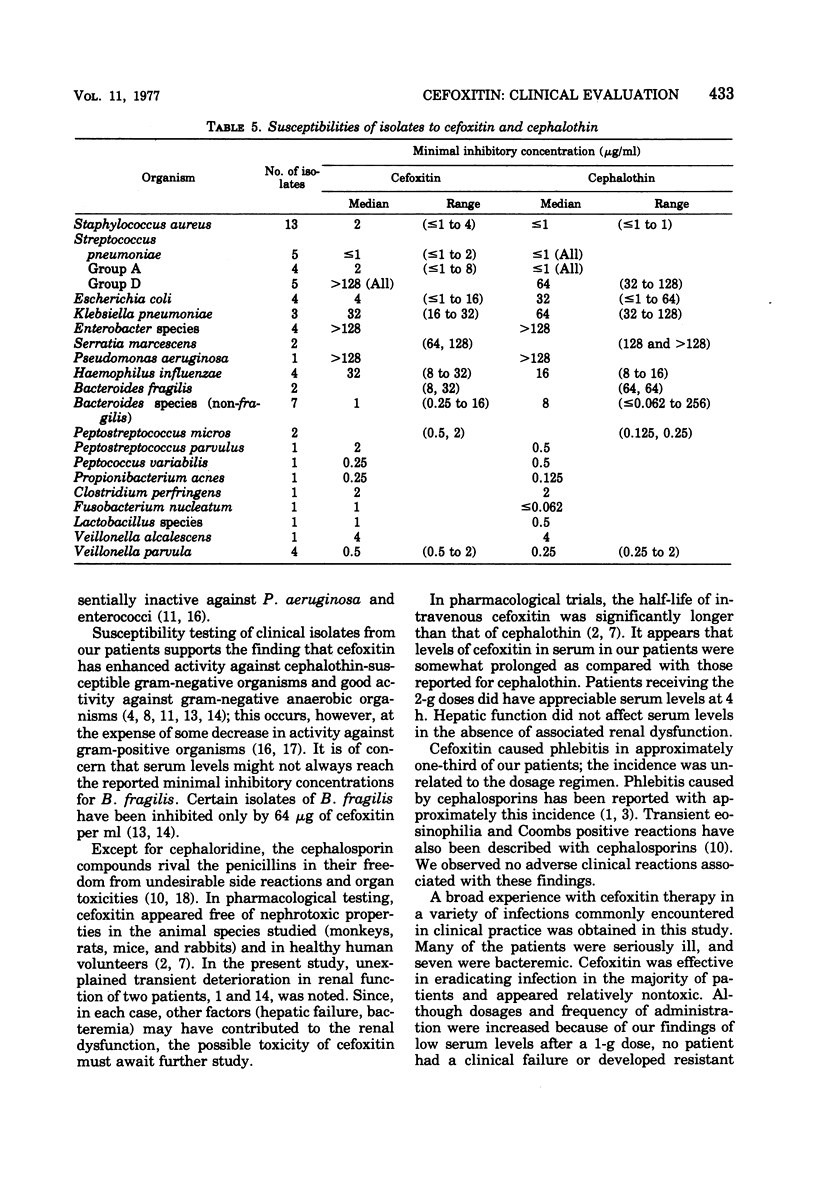
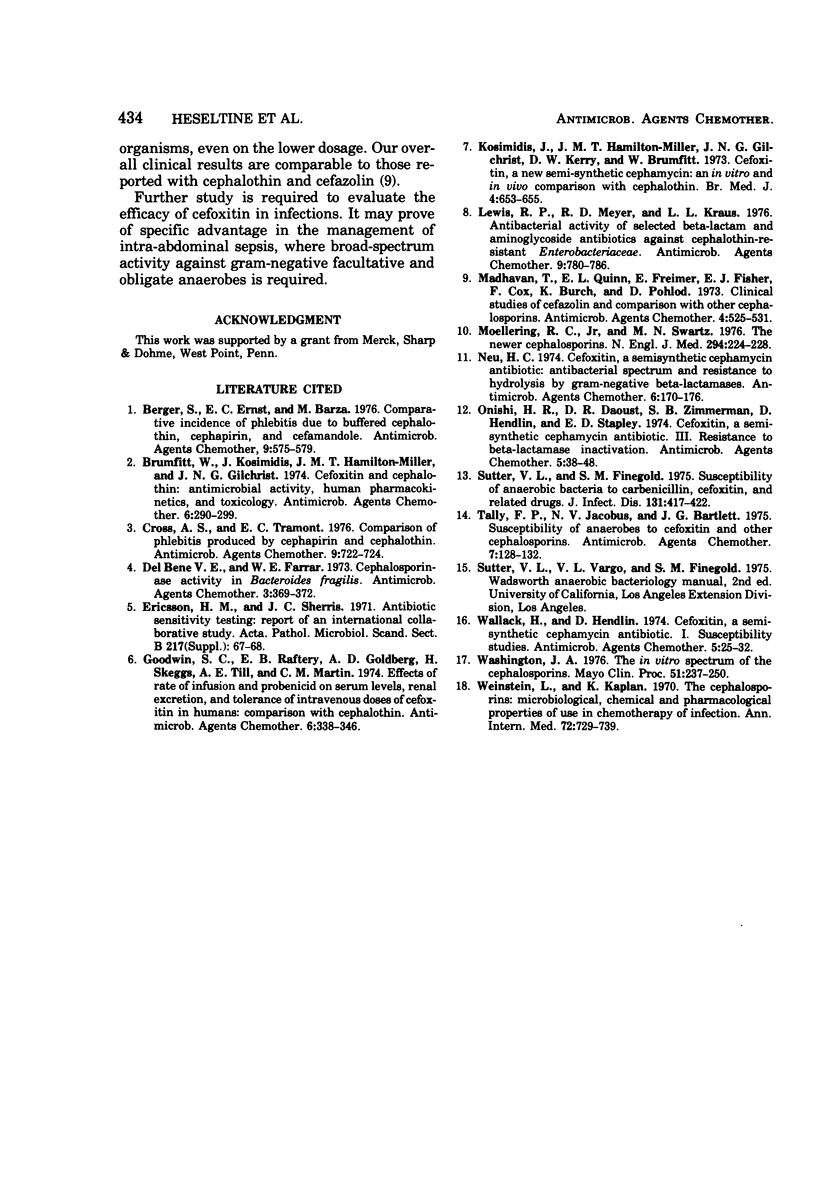
Selected References
These references are in PubMed. This may not be the complete list of references from this article.
- Berger S., Ernst E. C., Barza M. Comparative incidence of phlebitis due to buffered cephalothin, cephapirin, and cefamandole. Antimicrob Agents Chemother. 1976 Apr;9(4):575–579. doi: 10.1128/aac.9.4.575. [DOI] [PMC free article] [PubMed] [Google Scholar]
- Brumfitt W., Kosmidis J., Hamilton-Miller J. M., Gilchrist J. N. Cefoxitin and cephalothin: antimicrobial activity, human pharmacokinetics, and toxicology. Antimicrob Agents Chemother. 1974 Sep;6(3):290–299. doi: 10.1128/aac.6.3.290. [DOI] [PMC free article] [PubMed] [Google Scholar]
- Cross A. S., Tramont E. C. Comparison of phlebitis produced by cephapirin and cephalothin. Antimicrob Agents Chemother. 1976 Apr;9(4):722–724. doi: 10.1128/aac.9.4.722. [DOI] [PMC free article] [PubMed] [Google Scholar]
- Del Bene V. E., Farrar W. E., Jr Cephalosporinase activity in Bacteroides fragilis. Antimicrob Agents Chemother. 1973 Mar;3(3):369–372. doi: 10.1128/aac.3.3.369. [DOI] [PMC free article] [PubMed] [Google Scholar]
- Goodwin C. S., Raftery E. B., Goldberg A. D., Skeggs H., Till A. E., Martin C. M. Effects of rate of infusion and probenecid on serum levels, renal excretion, and tolerance of intravenous doses of cefoxitin in humans: comparison with cephalothin. Antimicrob Agents Chemother. 1974 Sep;6(3):338–346. doi: 10.1128/aac.6.3.338. [DOI] [PMC free article] [PubMed] [Google Scholar]
- Hall R. C. Letter: Best's biliary flush. N Engl J Med. 1976 Jan 22;294(4):224–224. doi: 10.1056/NEJM197601222940414. [DOI] [PubMed] [Google Scholar]
- Kosmidis J., Hamilton-Miller J. M., Gilchrist J. N., Kerry D. W., Brumfitt W. Cefoxitin, a new semi-synthetic cephamycin: an in-vitro and in-vivo comparison with cephalothin. Br Med J. 1973 Dec 15;4(5893):653–655. doi: 10.1136/bmj.4.5893.653. [DOI] [PMC free article] [PubMed] [Google Scholar]
- Lewis R. P., Meyer R. D., Kraus L. L. Antibacterial activity of selected beta-lactam and aminoglycoside antibiotics against cephalothin-resistant Enterobacteriaceae. Antimicrob Agents Chemother. 1976 May;9(5):780–786. doi: 10.1128/aac.9.5.780. [DOI] [PMC free article] [PubMed] [Google Scholar]
- Madhavan T., Quinn E. L., Freimer E., Fisher E. J., Cox F., Burch K., Pohlod D. Clinical studies of cefazolin and comparison with other cephalosporins. Antimicrob Agents Chemother. 1973 Nov;4(5):525–531. doi: 10.1128/aac.4.5.525. [DOI] [PMC free article] [PubMed] [Google Scholar]
- Neu H. C. Cefoxitin, a semisynthetic cephamycin antibiotic: antibacterial spectrum and resistance to hydrolysis by gram-negative beta-lactamases. Antimicrob Agents Chemother. 1974 Aug;6(2):170–176. doi: 10.1128/aac.6.2.170. [DOI] [PMC free article] [PubMed] [Google Scholar]
- Onishi H. R., Daoust D. R., Zimmerman S. B., Hendlin D., Stapley E. O. Cefoxitin, a semisynthetic cephamycin antibiotic: resistance to beta-lactamase inactivation. Antimicrob Agents Chemother. 1974 Jan;5(1):38–48. doi: 10.1128/aac.5.1.38. [DOI] [PMC free article] [PubMed] [Google Scholar]
- Sutter V. L., Finegold S. M. Susceptibility of Anaerobic bacteria to carbenicillin, cefoxitin, and related drugs. J Infect Dis. 1975 Apr;131(4):417–422. doi: 10.1093/infdis/131.4.417. [DOI] [PubMed] [Google Scholar]
- Tally F. P., Jacobus N. V., Bartlett J. G., Gorbach S. L. Susceptibility of anaerobes to cefoxitin and other cephalosporins. Antimicrob Agents Chemother. 1975 Feb;7(2):128–132. doi: 10.1128/aac.7.2.128. [DOI] [PMC free article] [PubMed] [Google Scholar]
- Wallick H., Hendlin D. Cefoxitin, a semisynthetic cephamycin antibiotic: susceptibility studies. Antimicrob Agents Chemother. 1974 Jan;5(1):25–32. doi: 10.1128/aac.5.1.25. [DOI] [PMC free article] [PubMed] [Google Scholar]
- Washington J. A. The in vitro spectrum of the cephalosporins. Mayo Clin Proc. 1976 Apr;51(4):237–250. [PubMed] [Google Scholar]
- Weinstein L., Kaplan K. The cephalosporins. Microbiological, chemical, and pharmacological properties and use in chemotherapy of infection. Ann Intern Med. 1970 May;72(5):729–739. doi: 10.7326/0003-4819-72-5-729. [DOI] [PubMed] [Google Scholar]


